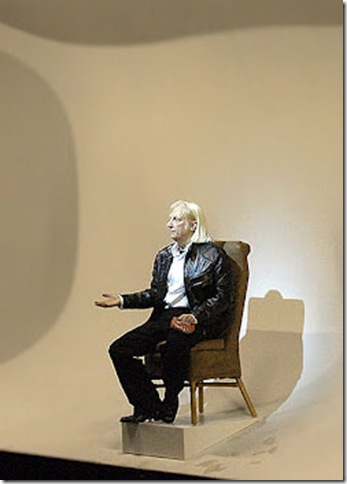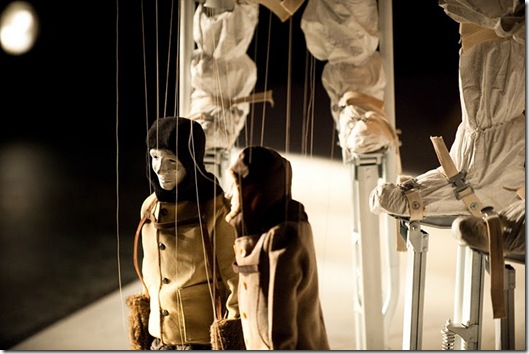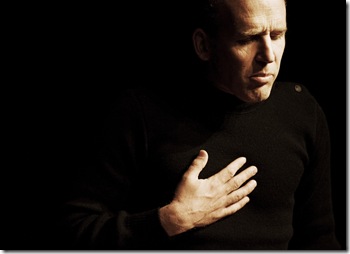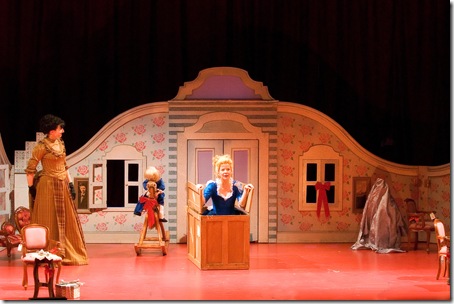Delusion, the multi-talented Laurie Anderson’s one-woman performance, is a bit like a sound and light show, evocative to hear and interesting to view, but without substance. Before proceeding, I have to admit in the interests of full disclosure that I had never seen Anderson before. Consequently, unlike many critics, I cannot compare this work with previous productions in her decades-long career.
Delusion is a multimedia show designed, composed and written by Anderson. The ostensibly simple set consists of three large screens, two on either side of the stage, and one upstage center. Downstage center is a low and, at the opening, abstract form, with colored pulsating lights playing on it. (Later, it morphs into a sofa.) Lights go down, two screens turn blue, the central one depicts flames, which transform into swirling autumn leaves. Red and blue are the paramount colors of the show. Time passes; Laurie Anderson enters, an androgynous figure wearing a white shirt, necktie, and pants, and walks to a podium to pick up her trademark violin, an electronic, but stringless instrument. She also makes use of a synthesizer. Although advance publicity claims that this piece was “conceived as a series of short mystery plays,” music, particularly in the first half, often dominates, or perhaps extends, spoken language. Certainly, it is music, along with the visual projections, that provide the performance’s emotional elements.
While Anderson’s stories are enigmatic, it is not clear in what sense they are “mystery plays.” At times she poses questions that the stories address ambiguously. Tales and images of loss – some sad, others funny – run through the play: the America that once was, the passing of Anderson’s mother, the 19th century Russian philosopher Nikolai Federov’s vision of resurrecting ancestors using technology. In one of the more amusing moments Anderson recounts a dream of giving birth to her dog in a hospital, assisted by sympathetic nurses and a beaming doctor.
Stylistically and purposefully,Anderson distances herself from the audience through technology. Even when she speaks in her husky voice, it is electronically modified to a degree. For her male doppelganger Fenway Bergamot, she uses a voice filter that moves her voice into a male register, with the result that it sounds like a slowed down audio tape. Unfortunately, the filter makes Bergamot’s speech hard to understand and undercuts the dialogue between the two characters who share one body.
While the production gives a sense of movement through its sometimes reverberating, throbbing, passionate music as well as its changing images and lighting, Anderson moves very little. It is the technology that is the star and she the mastermind.
Boston, Sept. 30, 2011
Delusion (Laurie Anderson)
ArtsEmerson at the Cutler Majestic, Boston ,MA
Commissioned by Vancouver 2010 Cultural Olympiad, Vancouver;
Barbicanite 10,London
Production Credits
Laurie Anderson-Music, Text and Visual Design
Amy Khoshbin-Video Design and Live Mix
Rus Snelling-Lighting Design and Production Management
Dave Cook-Front of House Audio
Maryse Alberti-Video Director of Photography
Toshiaki Ozawa-Additional Video
Shane Koss-Audio Rig Design
Konrad Kaczmarek-Audio Software Design
Ned Steinberger-Violin Design
Bob Currie-Story Team
Rande Brown-Story Team



